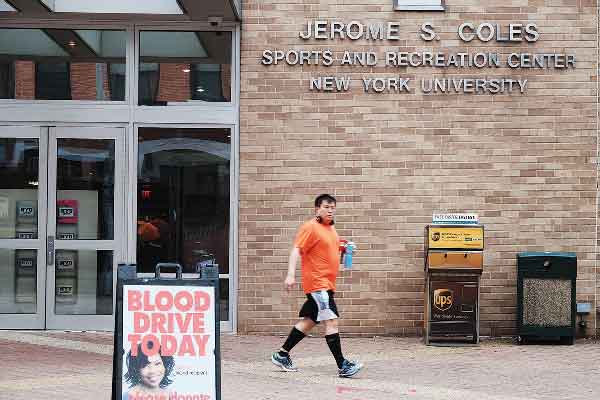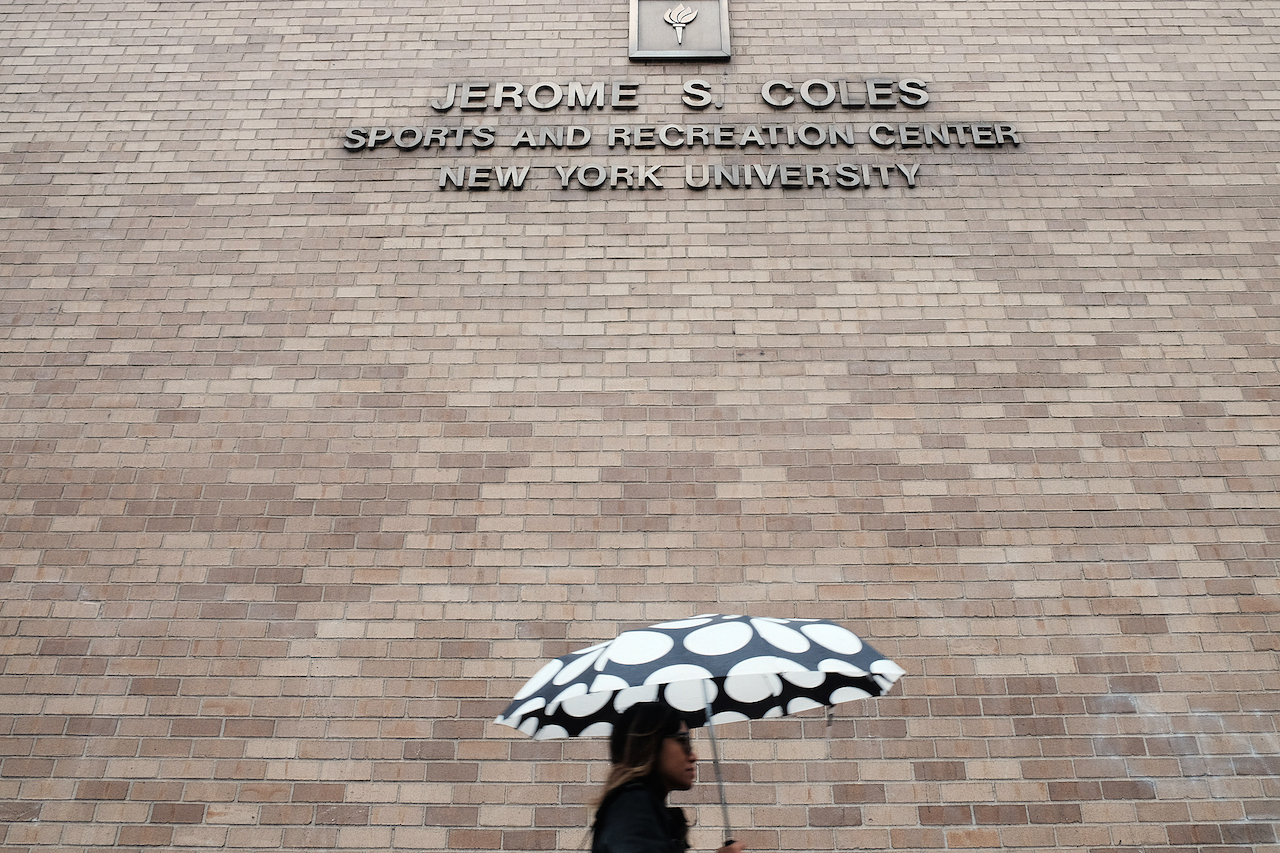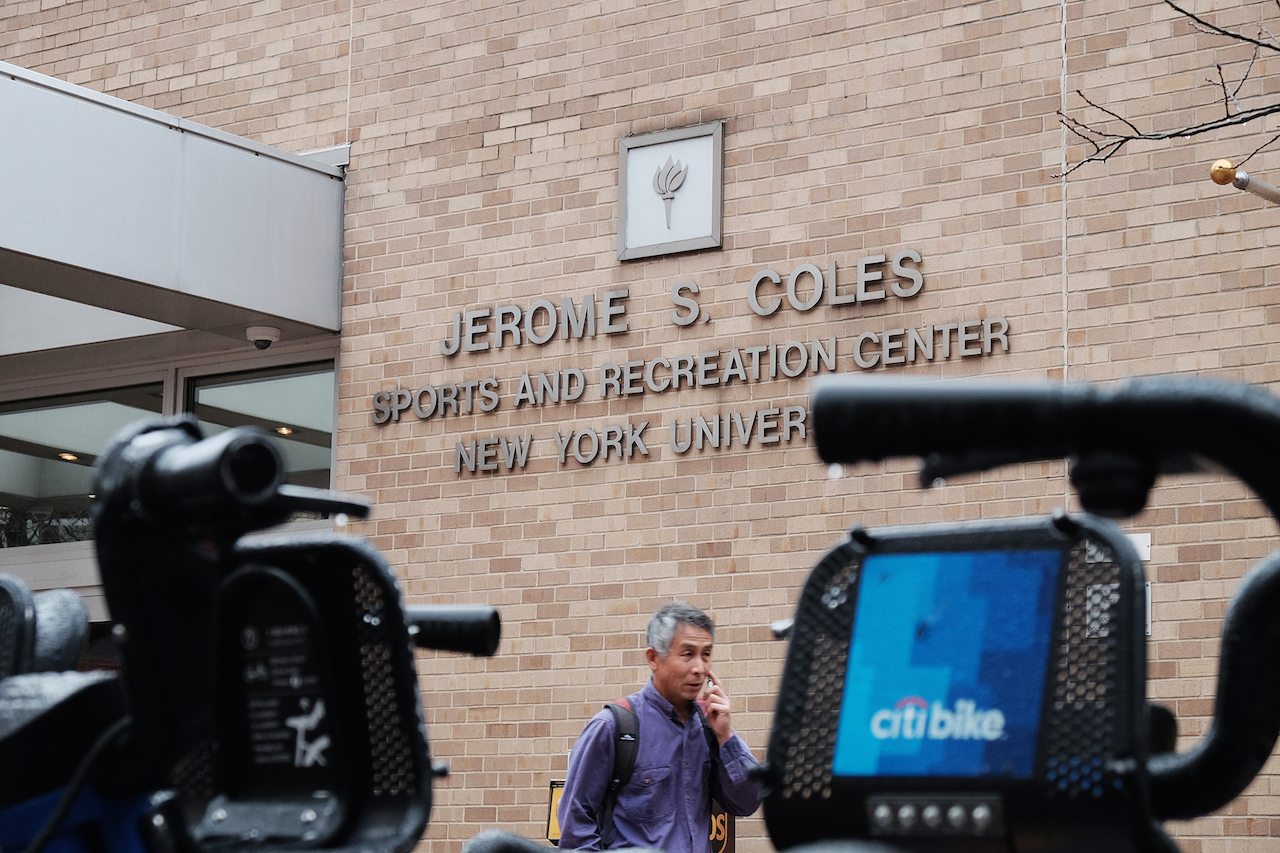
The Coles gym on Mercer St. is heavily used by N.Y.U. students and faculty, as well as non-university-affiliated community members.
BY YANNIC RACK | Critics of New York University’s 20-year development plan say the school is jumping the gun on closing the heavily used Coles gym, robbing students, faculty and Villagers of much-needed workout space.
The Jerome S. Coles Sports Center, on Mercer St. between Bleecker and West Houston Sts., will soon be razed to make way for the first building of the university’s massive South Village “N.Y.U. 2031” development project.
“The issue is very simple: They don’t have an adequate replacement space,” said Mark Crispin Miller, a professor of media studies at the school and a leader of N.Y.U. Faculty Against the Sexton Plan, which opposes the development.
“We don’t believe that this real estate plan is in N.Y.U.’s best interest,” he said. “But for the time being, at the very least, we can’t see any sense in closing a huge facility for which they don’t have an adequate replacement.”
According to a memo sent out on Nov. 13 by Christopher Bledsoe, N.Y.U.’s assistant vice president for student affairs and director of athletics, the gym will close on Jan. 22.
Matt Nagel, a university spokesperson, said the school tried to accommodate users during the closure — until a new facility opens in the “Zipper Building,” which will replace Coles — by lowering prices for community members who are not affiliated with N.Y.U. and providing access to three replacement gyms over the next few years. The “Zipper” will be the first building of the four-building project to be constructed.
In a statement, Nagel said, “We developed these plans in as responsive a fashion as we could, while also accomplishing our three main goals of permitting student athletes to continue to compete; enabling others to exercise and stay fit; and minimizing layoffs for Coles’ student and professional staff members.”
The replacement facilities include the Palladium dorm athletic facility on E. 14th St., the Brooklyn athletic facility at the N.Y.U. Tandon School of Engineering (formerly N.Y.U. Polytechnic) campus in Metrotech in Downtown Brooklyn, and a new facility in a building N.Y.U. is renovating on Lafayette St. that will open once Coles closes.
But the school’s plan isn’t enough for Miller and his fellow critics, who decry the alternatives as insufficient and ill conceived.
“It won’t even come close to being adequate,” said Bo Riccobono, an N.Y.U. adjunct professor and a longtime member of Community Board 2. “It’s total nonsense,” he said.
According to N.Y.U.’s Web site, the low-rise Coles facility currently covers 142,000 square feet and serves up to 3,500 people every day.
The university did not provide information for comparison on the size of the three replacement facilities before press time, and also didn’t specify how large the new gym in the “Zipper Building” would be and when it is expected to open.
A flier from N.Y.U. FASP, however, claims the three fitness centers only add up to less than 50,000 square feet.
“The fact is that all three of those spaces comprise a fraction of the space in Coles,” Miller stated.
Miller said the university administration has mostly been unresponsive to pamphlets and e-mails on the issue sent out by faculty and students; but he still hopes N.Y.U. might decide to delay demolition until a more appropriate alternative is found.
“What is the big hurry? Why are they rushing into this?” he said. “If they do it prematurely, everybody is going to suffer here.”
Speaking of Tandon, in addition, on Wednesday, members of N.Y.U.’s graduate students union protested outside of Coles, decrying a list of 15 grievances against the university, including that Coles “was the site of a massive job loss for graduate workers from…Tandon.”
Tandon, the protesters note, has a largely international student population who are ineligible to work off campus.



















